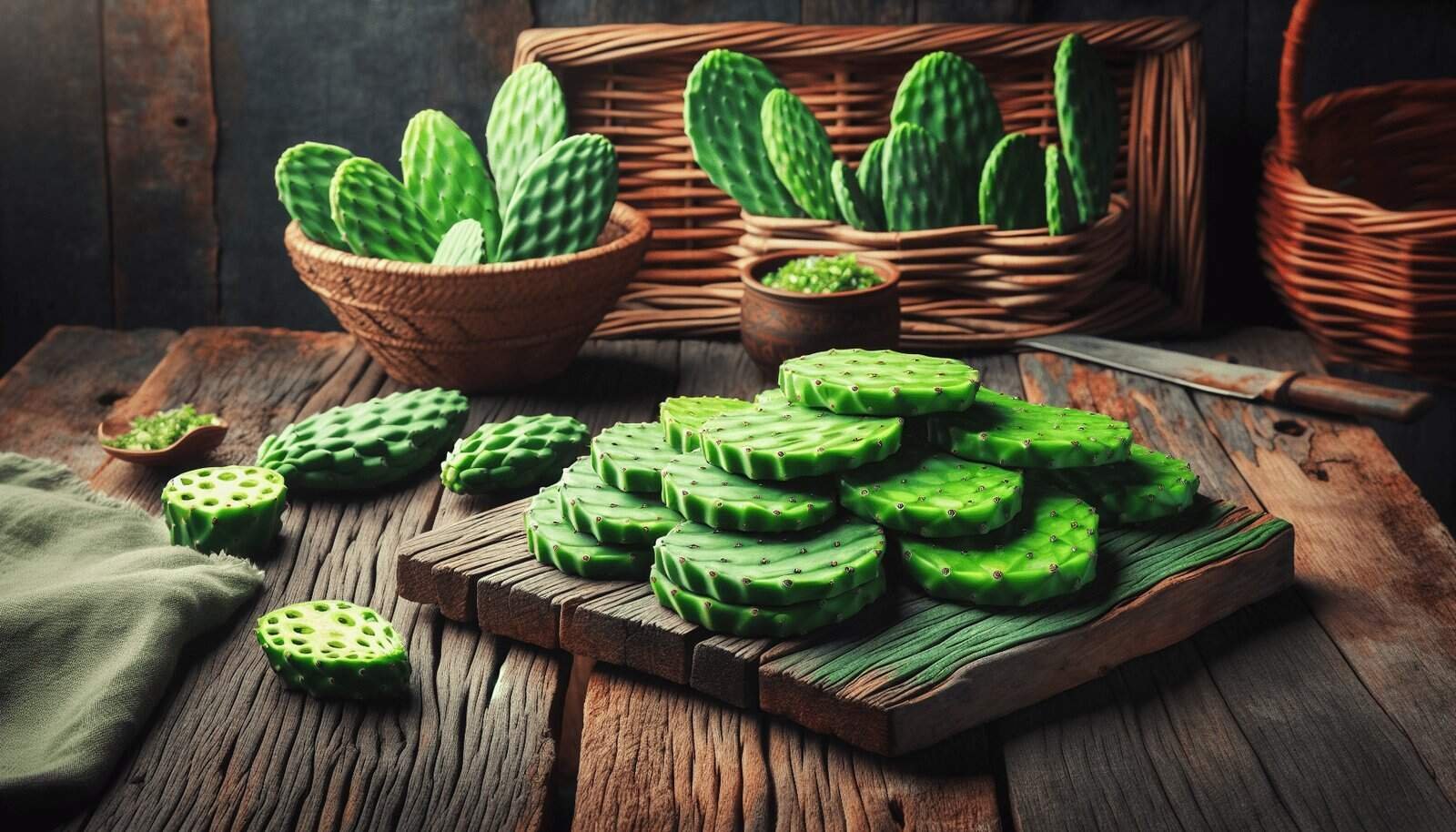Have you ever found yourself with a fresh batch of nopal and wondered how to store it properly to maintain its vibrant freshness? Nopal, or prickly pear cactus pads, is not just a staple in Mexican cuisine but also a nutritional powerhouse. Whether you’re a cactus connoisseur or new to the culinary world of this succulent, knowing how to store nopal correctly can make all the difference in preserving its taste and benefits.

Understanding Nopal: A Brief Overview
Before diving into storage methods, it’s helpful to know what nopal is and why it deserves a place in your kitchen. Nopal is the fleshy pad of the prickly pear cactus and is often used in a variety of dishes ranging from salads to tacos. Rich in fiber, antioxidants, vitamins, and minerals, nopal can be a healthy addition to your diet. Its flavor is subtle, often described as a cross between green beans and okra, with a slight tartness.
Nutritional Benefits of Nopal
The health benefits of nopal are significant. High in dietary fiber, nopal helps in improving digestive health. It’s also a good source of vitamins A, C, and K, along with magnesium, calcium, and potassium. Moreover, nopal has been linked to potential benefits such as reducing blood sugar levels, providing anti-inflammatory properties, and aiding in weight management.
Why Proper Storage Matters
Storing nopal appropriately is crucial for maintaining its texture, flavor, and nutritional value. Like many fresh produce items, improper storage can lead to quicker spoilage, loss of nutrients, and even food waste.
Methods for Storing Fresh Nopal
Now, let’s explore some of the effective methods you can use to store fresh nopal, helping you to enjoy its benefits for an extended period.
Refrigeration: The Most Common Method
One of the simplest ways to store fresh nopal is by using your refrigerator. By keeping nopal cool, you can preserve its freshness for about a week. Here’s how you can do it:
Cleaning the Nopal: Before storing, rinse the nopal pads under cool water to remove any dirt or debris. Use a vegetable brush if necessary, especially to ensure that any remaining spines are brushed away.
Drying: After cleaning, pat the nopal dry with a clean kitchen towel. Any moisture left on the pads can accelerate spoilage.
Packaging: Place the pads in a plastic bag, but don’t seal it completely. It’s important to allow some air circulation to prevent moisture buildup which can lead to molding.
Storing: Put the bag in the refrigerator’s crisper drawer. The cool, humidified environment will help in retaining the nopal’s freshness.
Freezing: For Long-Term Storage
If you have a surplus of nopal and wish to keep it for an extended period, freezing is an excellent option. Although there might be a slight texture change after thawing, the freezing process retains most of the nopal’s flavors and nutrients. Follow these steps to freeze nopal effectively:
Preparation: As with refrigeration, begin by cleaning and drying the nopal pads thoroughly.
Blanching: To preserve the color and texture, blanch the pads in boiling water for a few minutes and then quickly transfer them to an ice bath. This process helps in deactivating the enzymes that lead to loss of taste and color during freezing.
Cutting: It’s recommended to slice the nopal into strips or cubes before freezing for convenience, especially if you plan to use them in cooked dishes later.
Freezing: Lay the pieces on a baking sheet in a single layer and place them in the freezer for a few hours. Once frozen, transfer them to a freezer-safe bag or airtight container.
Pickling: A Flavorful Alternative
Pickling nopal is not just a storage method but also a way to introduce new flavors. Pickled nopal can be a tangy addition to salads, tacos, or sandwiches. Here’s a simple guide to pickling nopal:
Slicing and Cleaning: Start by slicing the nopal into thin strips after cleaning.
Preparing the Brine: Create a brine using vinegar, water, salt, and your choice of spices like garlic, oregano, or chili.
Boiling: Heat the brine, then add the nopal strips and let them simmer for about five minutes.
Jar It Up: Transfer the nopal and brine into sterilized jars, ensuring the nopal is fully submerged. Seal the jars tightly.
Storing: Once cooled, store the jars in the refrigerator. Pickled nopal can last for several months and becomes more flavorful over time.
Drying: A Method for Preservation
Drying is one of the oldest preservation methods and can be used for nopal as well, allowing it to be stored without refrigeration. Dehydrated nopal can act as a snack or be rehydrated for cooking. Here’s how you can dry nopal:
Slicing: Cut the nopal into thin strips to ensure even drying.
Using a Dehydrator: Place the strips on the dehydrator trays, ensuring they aren’t overlapping. Set the dehydrator to a low temperature (around 125°F) and leave it running for several hours until the nopal is crisp.
Storing: Once dried, store the strips in an airtight container. Keep the container in a cool, dry place to maximize shelf life.
Additional Tips for Optimal Storage
Following these core methods, there are several additional tips to ensure your nopal remains as fresh and nutritious as possible:
Avoid Moisture: Whether you’re refrigerating, freezing, or drying nopal, keeping it as dry as possible prevents spoilage.
Check Regularly: Especially when refrigerated, keep an eye on your nopal to ensure it’s not spoiling. Remove any pieces that show signs of decay to protect the rest.
Climate Considerations: In humid climates, storage times might reduce due to higher moisture levels in the air. Consider adapting storage methods to fit your environmental conditions.

The Environmental Impact of Storing Nopal
When considering storage methods, it’s beneficial to also think about the environmental impact. By optimizing storage techniques, you minimize food waste, playing a part in a more sustainable lifestyle. Additionally, methods like drying, which require no energy post-process, can be more eco-friendly compared to other options.
Sustainable Practices in Food Storage
Utilizing sustainable practices while storing nopal not only benefits your diet but also contributes positively to environmental conservation. For instance, reusing jars for pickles or employing solar drying methods can further enhance the eco-friendly aspect of your food storage routine.
Enjoying Nopal Beyond Storage
After storing your nopal, the possibilities are endless. Integrate this versatile ingredient into your meals with these ideas:
Fresh Salads: Combine raw nopal with tomatoes, onions, and lime for a refreshing salad.
Soups and Stews: Add nopal to soups for extra texture and nutrition.
Grilled Nopal: Season with a bit of salt and grill for a smokey, flavorful side dish.
Exploring these culinary avenues will undoubtedly put your newly-acquired storage skills to good use. Each meal offers an opportunity to enjoy nopal in its various flavorful forms.

Conclusion
So, the next time you find yourself with a fresh batch of nopal, you have a variety of storage methods at your fingertips. From refrigerating and freezing to more creative methods like pickling and drying, each technique offers a unique way to preserve the freshness and expand your culinary horizons. Remember, proper storage not only extends the shelf life of nopal but also maintains its nutritional benefits, ensuring you can enjoy its full potential whenever you’re ready to cook.
With these insights, you’re now ready to indulge in the amazing world of nopal, storing it for savory dishes and health benefits alike. Happy cooking!

